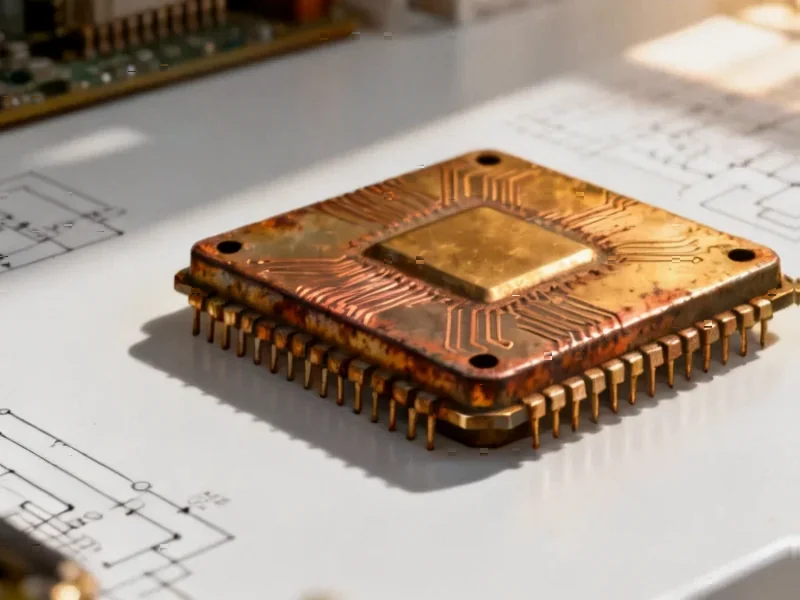According to Guru3D.com, Intel’s upcoming Nova Lake architecture could reintroduce powerful instruction set extensions including AVX10, APX, and AMX support that have been absent from consumer CPUs for several generations. Updates to the Netwide Assembler (NASM) 3.0 and 3.1 toolchains suggest renewed development around these advanced extensions, potentially bringing 512-bit vector and matrix processing back to desktop and mobile processors. The architecture might feature an ambitious 52-core configuration divided into 16 high-performance cores, 32 efficiency cores, and 4 ultra-low-power units. This follows earlier GCC compiler patches that indicated no implementation of AVX10 or AMX for Nova Lake, suggesting Intel may have reversed course on restricting these features to data-center products.
The Thermal and Power Reality Check
While the prospect of AVX10 and APX returning to consumer CPUs sounds exciting, Intel faces significant thermal and power challenges that previous generations couldn’t solve. The company’s history with AVX-512 on consumer platforms was marred by thermal throttling and power consumption issues so severe that they ultimately disabled the feature entirely in Alder Lake and Raptor Lake. NASM toolchain updates might indicate development progress, but they don’t address the fundamental physics problem: 512-bit vector operations generate immense heat and power draw that consumer cooling solutions struggle to manage. Intel’s hybrid architecture approach with 52 cores only compounds this challenge, as simultaneous AVX workloads across multiple performance cores could create thermal scenarios that even advanced packaging can’t mitigate.
Strategic Timing and Competitive Pressure
Intel’s potential reversal on AVX10 comes at a critical juncture where AMD’s Zen 5 already executes full 512-bit AVX instructions natively. This isn’t just a technical decision—it’s a market survival move. AMD’s architectural advantage in parallel processing has been steadily eroding Intel’s traditional dominance in workstation and creator segments. The rumored 52-core configuration suggests Intel is attempting to compete on both core count and instruction set breadth simultaneously, which historically has led to compromised implementations. The timing also raises questions about software ecosystem readiness—even if Nova Lake delivers these capabilities, most consumer applications remain optimized for much narrower vector widths, meaning the theoretical performance gains might not materialize in real-world usage for years.
The Ghost of Implementation Failures
History provides ample warning about the gap between architectural ambition and shipping product. Intel’s track record with introducing advanced instruction sets to consumer platforms includes multiple instances of delayed adoption, compatibility issues, and performance that failed to justify the thermal tradeoffs. The company’s previous attempts at bringing server-grade features to consumer chips often resulted in segmented product lines where the full capabilities were either thermally constrained or required expensive motherboard and cooling solutions that defeated the purpose of “consumer” pricing. The hybrid core approach itself introduces additional complexity—ensuring that AVX workloads route efficiently to performance cores while maintaining system stability across 52 cores represents a scheduling challenge that previous Intel architectures have struggled to solve optimally.
The Business Reality Behind the Speculation
Beyond the technical challenges lies a fundamental business question: does the consumer market actually need these capabilities, or is this primarily a competitive response to AMD? The development and validation costs for implementing AVX10, APX, and AMX across a 52-core consumer architecture are substantial, and Intel must weigh these investments against realistic market demand. Most consumer workloads—including gaming and general productivity—show diminishing returns beyond current AVX2 implementations. The AI acceleration angle makes strategic sense, but requires software ecosystem development that Intel has historically struggled to catalyze compared to competitors with more cohesive platform strategies. This move might represent Intel attempting to redefine “consumer” computing to include capabilities that were previously exclusive to professional segments, but whether the market will follow remains uncertain.




